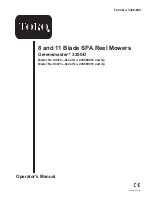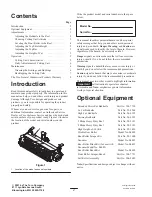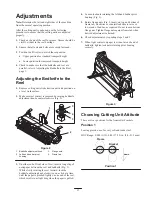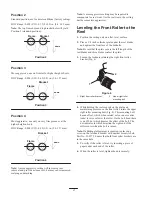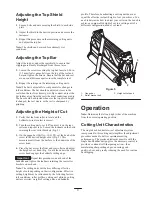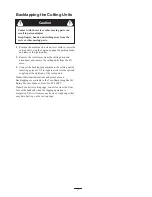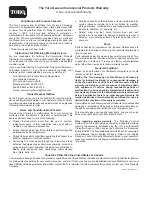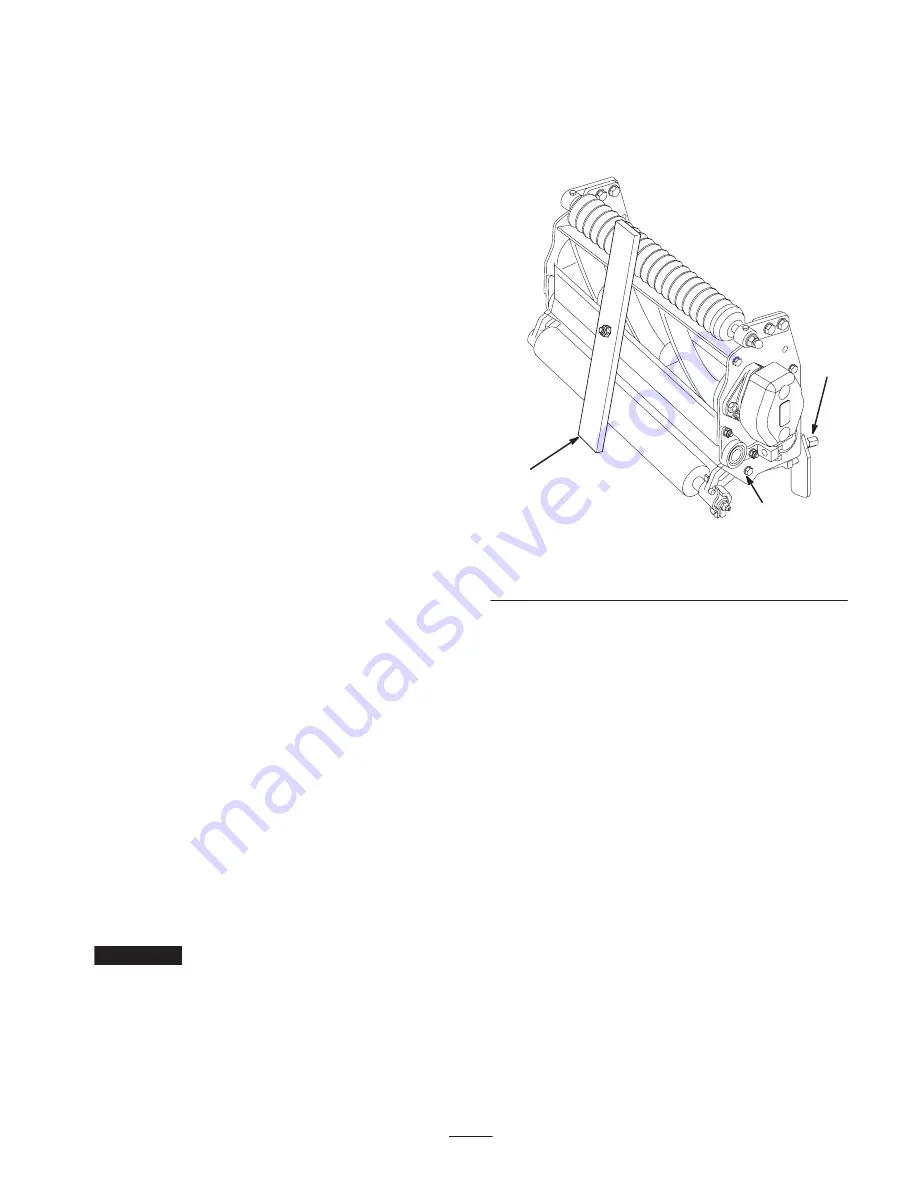
5
Adjusting the Top Shield
Height
1. Loosen bolts and nuts securing the shield to each side
plate.
2. Adjust the shield to the desired position and secure the
fasteners.
3. Repeat this procedure on the remaining cutting units
and adjust the top bar.
Note: The shield can be raised for extremely wet
conditions.
Adjusting the Top Bar
Adjust the top bar, under the rear shield, to ensure that
clippings are cleanly discharged from the reel area.
1. Loosen the screws securing the top bar. Insert a 0.06 in.
(1.5 mm) feeler gauge between the top of the reel and
bar and tighten the screws. Ensure that the bar and reel
are an equal distance apart across the complete reel.
2. Repeat the settings on the remaining cutting units.
Note: The bar is adjustable to compensate for changes in
turf conditions. The bar should be adjusted closer to the
reel when the turf is extremely wet. By contrast, adjust the
bar further away from the reel when turf conditions are dry.
The bar should be adjusted whenever the top shield height
is changed, the reel wears, or the reel is sharpened by
grinding.
Adjusting the Height of Cut
1. Verify that the front roller is level and the
bedknife-to-reel contact is correct.
2. Turn the cutting unit over (90
°
) and rest it on the rear
roller and top rear tabs. Loosen the locknuts on the bolts
retaining the rear roller brackets (Fig. 5).
3. On the gauge bar (Part No. 13-8199), set the head of the
screw to the desired height of cut (Fig. 5). This
measurement is from the bar face to the underside of the
screw head.
4. Place the bar across the front and rear rollers and adjust
the height-of-cut knob (Fig. 5) until the underside of the
screw head engages the bedknife cutting edge.
Important
Repeat this procedure on each end of the
bedknife and tighten the locknuts retaining the rear roller
brackets on each end.
Note: The cutting units will deliver differing effective
height of cuts depending on their configuration. Effective
cutting height may be influenced by the following factors:
turf conditions, roller profiles, cutting unit attitude, cutting
unit accessories, weight of cutting units, and bedknife
profile. Therefore, benchsetting a cutting unit does not
equal the effective (actual) height of cut you achieve. You
need to determine how to adjust your cutter on the bench to
achieve a comparable height of cut to a cutting unit of a
different configuration, model, or brand.
1
2
3
Figure 5
1.
Gauge bar
2.
Roller bracket bolt
3.
Height-of-cut knob
Operation
Note: Determine the left and right sides of the machine
from the normal operating position.
Cutting Unit Characteristics
The single knob bedknife-to-reel adjustment system
incorporated in this cutting unit simplifies the adjustment
procedure needed to deliver optimum mowing
performance. The precise adjustment possible with the
single knob/bedbar design gives the necessary control to
provide a continual self-sharpening action—thus
maintaining sharp cutting edges, ensuring good
quality-of-cut, and greatly reducing the need for routine
backlapping.

